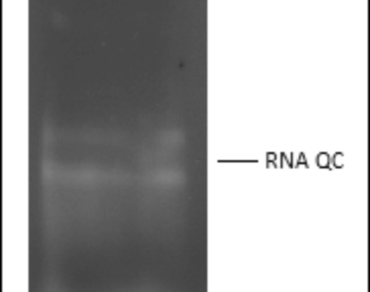Cloning of laccase gene from Coriolopsis caperata into heterologous E.coli host
Research Articles | Published: 02 December, 2022
Online ISSN : 2229-4473.
Website:www.vegetosindia.org
Pub Email: contact@vegetosindia.org
First Page: 195
Last Page: 200
Views: 747
Keywords:
Laccase gene,
E.coli
,
Coriolopsis caperata
, Directional cloning, Industrial enzymes
Abstract
The cloning of the laccase gene encoding industrially relevant laccase enzyme was carried out from Coriolopsis caperata into heterologous E.coli. Laccase enzymes play a role in the oxidation reactions of one electron of a wide range of phenols, aromatic amines and heterocyclic compounds such as lignin. They are multi-copper oxidoreductases that catalyze the one-electron (e-) oxidation coupled with the transfer of four electrons to the catalytic copper atoms, which leads to the reduction of two water molecules from reducing oxygen. In the present study, C. caperata was utilized for cloning the laccase gene and the protocol for cloning is outlined in the present study. The full-length gene (~ 1622bp) was amplified from Coriolopsis caperata by extracting RNA and synthesizing cDNA and PCR using gene-specific primers. By including the restriction site sequence of NcoI and XhoI enzymes into the synthetic primers, the directed cloning of the laccase gene fragment in the pET28b vector was performed.The construct was transformed into the E.coli BL-21 DE3 strain for expression. The transformed E.coli strain was screened on the kanamycin marker plate and the recombinant colonies were selected for plasmid isolation. Laccase gene cloning was confirmed by DNA sequencing of extracted plasmid. The cells were further processed for inclusion bodies isolation for enzyme recovery. The protein obtained was of size ~ 57kDa and confirmed on SDS PAGE which was same as expected size. The enzyme activity was found to be 73.1U/mL using ABTS as substrate. The laccase gene was successfully cloned from the fungus C. caperata and because laccase enzyme has widespread applications in the pharmaceutical, food, and environmental industries the E.coli recombinant host expressing laccase gene could serve as a warehouse for higher laccase enzyme production in these industries.

(*Only SPR Members can get full access. Click Here to Apply and get access)
References
Alves AM, Record E, Lomascolo A, Scholtmeijer K, Asther M, Wessels JG, Wösten HA (2004) Highlyefficient production of laccase by the basidiomycete Pycnoporus cinnabarinus. Appl Environ Microbiol 70(11):6379–6384
Baltierra-Trejo E, Márquez-Benavides L, Sánchez-Yáñez JM (2015) Inconsistencies and ambiguities in calculating enzyme activity: The case of laccase. J Microbiol Methods 119:126–131
Cheng C-M, Patel AK, Singhania RR, Tsai C-H, Chen S-Y, Chen C-W, Di Dong C (2021) “Heterologous expression of bacterial CotA-laccase, characterization and its application for biodegradation of malachite green. " Bioresource Technology 340:125708
Chenthamarakshan A, Parambayil N, Miziriya N, Soumya P, Lakshmi M, Ramgopal A, Dileep A, Nambisan P (2017) Optimization of laccase production from Marasmiellus palmivorus LA1 by Taguchi method of design of experiments. BMC Biotechnol 17(1):1–10
Dubé E, Shareck F, Hurtubise Y, Daneault C, Beauregard M (2008) Homologous cloning, expression, and characterisation of a laccase from Streptomyces coelicolor and enzymatic decolourisation of an indigo dye. Appl Microbiol Biotechnol 79(4):597–603
Fernandes AT, Soares CM, Pereira MM, Huber R, Grass G, Martins LO (2007) “A robust metallo-oxidase from the hyperthermophilic bacterium Aquifex aeolicus”. FEBS J 274(11):2683–2694
Iimura Y, Sonoki T, Habe H (2018) Heterologous expression of Trametes versicolor laccase in Saccharomyces cerevisiae. Protein expression and purification 141:39–43
Jiang Y-p, Cai J-l, Pei J-j, Li Q, Zhao L-g (2021) “Cloning, overexpression, and characterization of a thermostable, organic solvent-tolerant laccase from Bacillus pumilus ARA and its application to dye decolorization.“ ACS omega. 6:9741–974914
Kontro J, Maltari R, Mikkilä J, Kähkönen M, Mäkelä MR, Hildén K, Nousiainen P, Sipilä J (2020) “Applicability of recombinant laccases from the white-rot fungus Obba rivulosa for mediator-promoted oxidation of biorefinery lignin at low pH.“Frontiers in bioengineering and biotechnology:1387
Larrondo LF, Avila M, Salas L, Cullen D, Vicuna R (2003) “Heterologous expression of laccase cDNA from Ceriporiopsis subvermispora yields copper-activated apoprotein and complex isoform patterns.“ Microbiology 149(5): 1177–1182
Li L, Steffens JC (2002) “Overexpression of polyphenol oxidase in transgenic tomato plants results in enhanced bacterial disease resistance.“ Planta. 215:239–2472
Liu C, Zhang W, Qu M, Pan K, Zhao X (2020) Heterologous expression of laccase from Lentinula edodes in Pichia pastoris and its application in degrading rape straw. Front in microbiology 11:1086
Mayolo-Deloisa K, González-González M, Rito-Palomares M (2020) Laccases in food industry: Bioprocessing, potential industrial and biotechnological applications. Front Bioeng Biotechnol 8:222
Nandal P, Ravella SR, Kuhad RC (2013) “Laccase production by Coriolopsis caperata RCK2011: optimization under solid state fermentation by Taguchi DOE methodology.“ Scientific reports. 3:1–71
Piscitelli A, Pezzella C, Giardina P, Faraco V, Sannia G (2010) “Heterologous laccase production and its role in industrial applications.“ Bioengineered bugs. 1:254–2644
Shekher R, Sehgal S, Kamthania M, Kumar A (2011) “Laccase: microbial sources, production, purification, and potential biotechnological applications.“ Enzyme research 2011
Singh P, Kumar S (2019) Microbial enzyme in food biotechnology. Enzymes in food biotechnology. Elsevier, pp 19–28
Suzuki T, Endo K, Ito M, Tsujibo H, Miyamoto K, Inamori Y (2003) “A thermostable laccase from Streptomyces lavendulae REN-7: purification, characterization, nucleotide sequence, and expression.“ Bioscience, biotechnology, and biochemistry. 67:2167–217510
Tan S-I, Ng I-S, Yu Y-J (2017) Heterologous expression of an acidophilic multicopper oxidase in Escherichia coli and its applications in biorecovery of gold. Bioresources and Bioprocessing 4(1):1–10
Wadgaonkar M, Tale V, Chavan Y (2021) “Media Optimization and Comparative Study of White-Rot Fungi Species for Their Capacity to Produce Laccase Enzyme.“ Annals of the Romanian Society for Cell Biology: 12487–12499
Yang J, Li W, Ng TB, Deng X, Lin J, Ye X (2017) Laccases: production, expression regulation, and applications in pharmaceutical biodegradation. Front Microbiol 8:832
Acknowledgements
I would like to thank geneOmbio Technologies Pvt Ltd, Pune for the providing the laboratory facility required for the lab work.
Author Information
Rajiv Gandhi Institute of Information Technology and Biotechnology, Bharati Vidyapeeth Deemed to be University, Pune, Maharashtra, India
manasee.dw@gmail.com
Rajiv Gandhi Institute of Information Technology and Biotechnology, Bharati Vidyapeeth Deemed to be University, Pune, Maharashtra, India